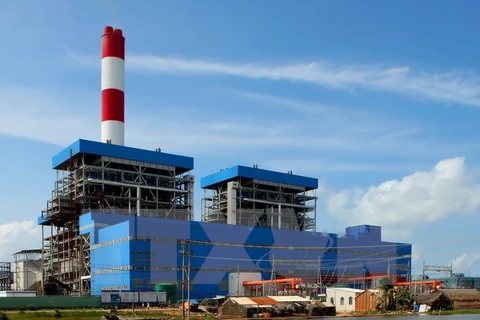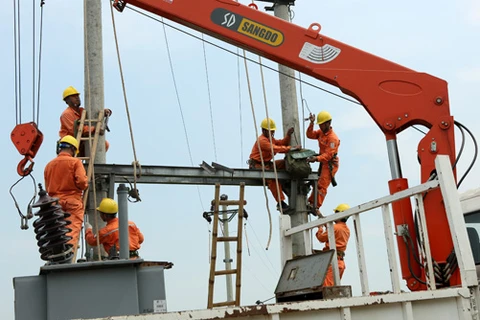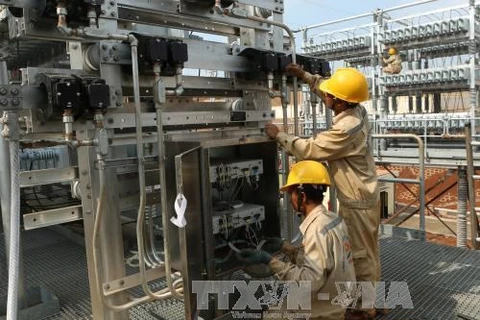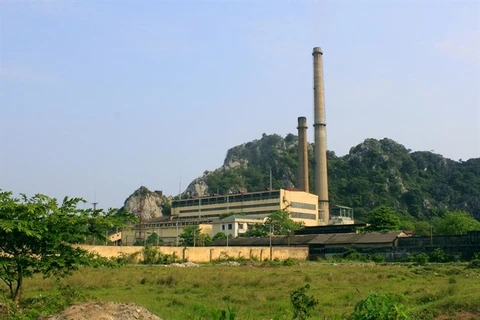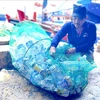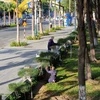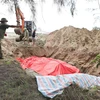Hanoi (VNA) – Developing coal-fired thermal power plants is needed to ensure the provision of electricity nationwide, but it risks environmental pollution without strict management.
According to the Electricity of Vietnam (EVN), the total capacity of these plants is estimated at 13,483 MW at present, accounting for 34.37 percent of electricity production.
In 2025-2030, southern provinces will need an additional 30,000 MW of electricity to fuel economic growth. Therefore, by 2020, there are set to be 32 coal thermal power plants with a combined capacity of about 26,000 MW, making up 49.3 percent of total electricity output.
By 2025 and 2030, this figure will be 47,600 MW and 55,300 MW, accounting for 55 percent and 53.2 percent of the electricity production, respectively.
These plants are expected to discharge 29 million tonnes of ash and cinder per year.
Five coal thermal power plants under the Vinh Tan thermal power project in the southeastern coastal province of BinhThuan, once coming into full operation by 2020, will absorb more than 20 million cubic meters of sea water to cool their turbines and then discharge it back to the sea.
In the process of burning coal to produce electricity, millions of tonnes of ash will be discharged each year, causing serious environmental pollution and affecting human health.
According to the national grid development plan for 2011-2020, the upcoming operational coal thermal power plants will make maximum use of domestic coal in addition to imported coal.
To generate 156 billion kWh of electricity each year by 2020, coal thermal power plants need more than 67 million tonnes of coal to reach total capacity of about 36,000 MW. The figure will increase to 171 million tonnes by 2030 when the total coal thermal power capacity stands at 75,000 MW.
This means the amount of coal residues will reach 14 million tonnes each year by 2020 and nearly 35 million tonnes by 2030, together with tens of millions of tonnes of ash.
Given these facts, the Ministry of Industry and Trade has directed groups and companies to review environmental protection work at businesses, including coal thermal power plants, requiring them to obey commitments on environmental inspection.
Thermal power plants must be responsible for their waste discharge and install a monitoring system for wastewater.
The ministry has worked with the Ministry of Construction to promulgate technical regulations for ash and cinder – which can be used as construction materials.
The Ministry of Natural Resources and Environment will issuea circular stipulating procedures to ensure environmental protection at solid waste treatment facilities.
Coal thermal power plants which are under construction will be put into operation only once they get approval from the environmental impact assessment agencies.
After six months of trial operation, contractors and investors must confirm the completion of environmental protection works and submit them to the environmental impact assessment agencies.-VNA
According to the Electricity of Vietnam (EVN), the total capacity of these plants is estimated at 13,483 MW at present, accounting for 34.37 percent of electricity production.
In 2025-2030, southern provinces will need an additional 30,000 MW of electricity to fuel economic growth. Therefore, by 2020, there are set to be 32 coal thermal power plants with a combined capacity of about 26,000 MW, making up 49.3 percent of total electricity output.
By 2025 and 2030, this figure will be 47,600 MW and 55,300 MW, accounting for 55 percent and 53.2 percent of the electricity production, respectively.
These plants are expected to discharge 29 million tonnes of ash and cinder per year.
Five coal thermal power plants under the Vinh Tan thermal power project in the southeastern coastal province of BinhThuan, once coming into full operation by 2020, will absorb more than 20 million cubic meters of sea water to cool their turbines and then discharge it back to the sea.
In the process of burning coal to produce electricity, millions of tonnes of ash will be discharged each year, causing serious environmental pollution and affecting human health.
According to the national grid development plan for 2011-2020, the upcoming operational coal thermal power plants will make maximum use of domestic coal in addition to imported coal.
To generate 156 billion kWh of electricity each year by 2020, coal thermal power plants need more than 67 million tonnes of coal to reach total capacity of about 36,000 MW. The figure will increase to 171 million tonnes by 2030 when the total coal thermal power capacity stands at 75,000 MW.
This means the amount of coal residues will reach 14 million tonnes each year by 2020 and nearly 35 million tonnes by 2030, together with tens of millions of tonnes of ash.
Given these facts, the Ministry of Industry and Trade has directed groups and companies to review environmental protection work at businesses, including coal thermal power plants, requiring them to obey commitments on environmental inspection.
Thermal power plants must be responsible for their waste discharge and install a monitoring system for wastewater.
The ministry has worked with the Ministry of Construction to promulgate technical regulations for ash and cinder – which can be used as construction materials.
The Ministry of Natural Resources and Environment will issuea circular stipulating procedures to ensure environmental protection at solid waste treatment facilities.
Coal thermal power plants which are under construction will be put into operation only once they get approval from the environmental impact assessment agencies.
After six months of trial operation, contractors and investors must confirm the completion of environmental protection works and submit them to the environmental impact assessment agencies.-VNA
source

